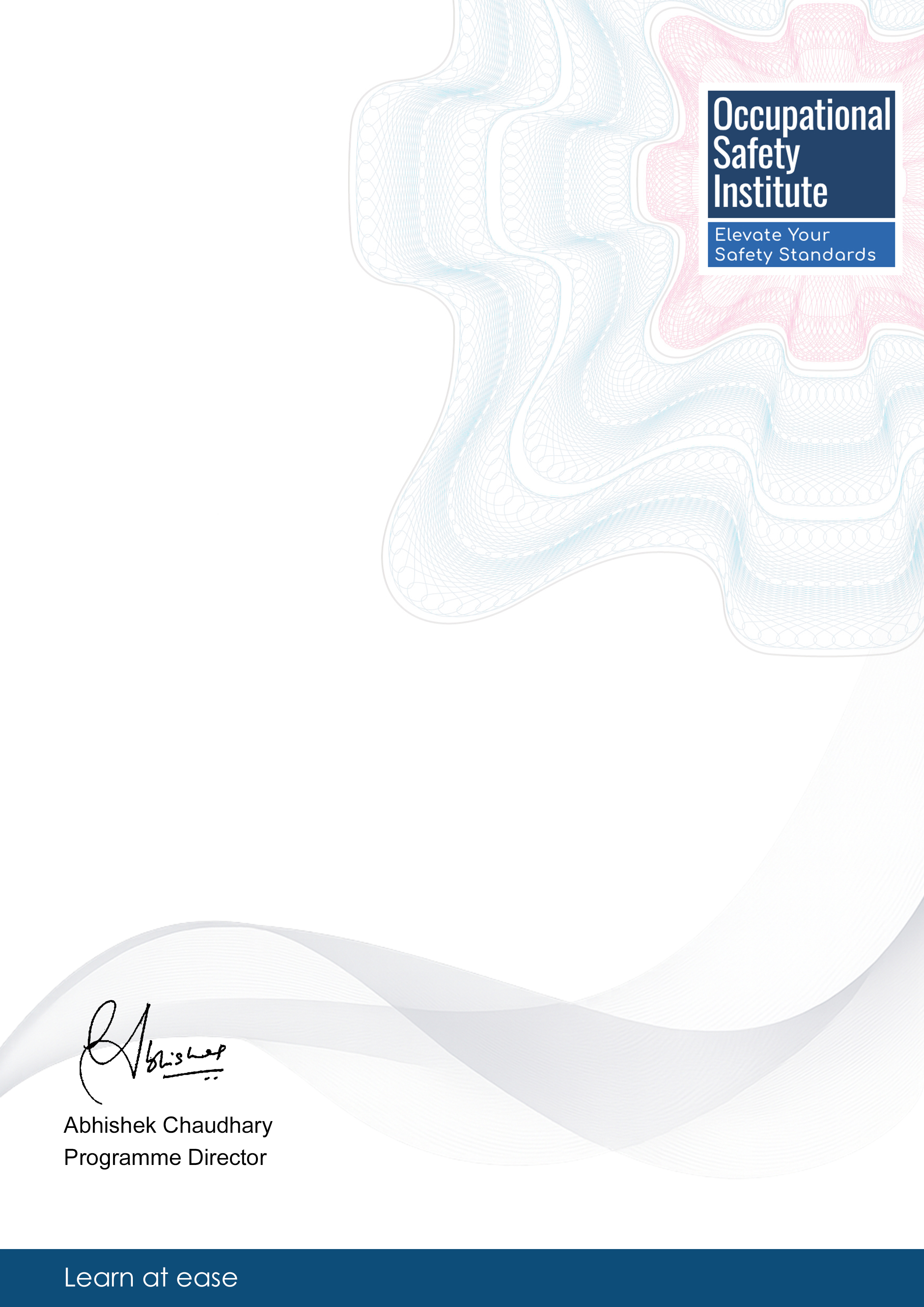Module 1: Introduction to Manual Handling
This module provides an overview of manual handling risks, relevant legislation, and the importance of proper lifting techniques.
This course focuses on teaching effective manual handling techniques and ergonomic best practices to improve workplace safety. It is designed for professionals in the health and safety industry seeking to enhance their knowledge and skills. The course stands out for its practical approach and real-world applications, providing participants with essential tools to prevent workplace injuries and promote a healthy work environment.
4.5/5
|128 reviews
|642 students enrolled
Comprehensive, industry-recognized certification that enhances your professional credentials
Self-paced online learning with 24/7 access to course materials for maximum flexibility
Practical knowledge and skills that can be immediately applied in your workplace
This module provides an overview of manual handling risks, relevant legislation, and the importance of proper lifting techniques.
Explore ergonomic principles and their application in creating a safe and efficient workplace environment.
This specialized module focuses on the science of ergonomics and its application in preventing musculoskeletal disorders (MSDs). You'll learn how to design workspaces that accommodate human capabilities and limitations.
Musculoskeletal disorders account for nearly 33% of all workplace injuries, with proper ergonomic interventions reducing these incidents by 50-90% according to OSHA data.
Learn how to conduct risk assessments, identify hazards, and implement control measures to prevent injuries.
This module provides you with practical frameworks and methodologies for conducting thorough risk assessments in various workplace settings. You'll learn evidence-based approaches to identify, evaluate, and prioritize potential hazards.
Effective risk assessment has been shown to reduce workplace injuries by up to 70% when implemented correctly, making this a critical skill for safety professionals.
Apply knowledge through practical exercises, case studies, and simulations to reinforce learning outcomes.
This programme includes comprehensive study materials designed to support your learning journey and offers maximum flexibility, allowing you to study at your own pace and at a time that suits you best.
You will have access to online podcasts with expert audio commentary.
In addition, you'll benefit from student support via automatic live chat.
Assessments for the programme are conducted online through multiple-choice questions that are carefully designed to evaluate your understanding of the course content.
These assessments are time-bound, encouraging learners to think critically and manage their time effectively while demonstrating their knowledge in a structured and efficient manner.
Professionals with expertise in manual handling techniques and ergonomics are in high demand across various industries due to the focus on workplace safety and employee well-being.
Career progression in health and safety can lead to roles such as Health and Safety Manager, Ergonomics Specialist, or Occupational Health Consultant. Professional development opportunities include certifications in specific areas of health and safety.
Responsible for developing and implementing health and safety policies to ensure compliance and promote a safe working environment.
Focuses on designing ergonomic workspaces and equipment to prevent musculoskeletal injuries and enhance employee comfort and productivity.
Provides expert advice on occupational health issues, conducts risk assessments, and advises on best practices for workplace health and safety.
Networking opportunities in health and safety events and conferences can expand professional connections. Pursuing advanced certifications or further education in specialized health and safety fields can enhance career prospects and industry recognition.
Occupational Therapist
"Thanks to this course, I can now create ergonomic workstations that improve patient outcomes and prevent workplace injuries."
Health and Safety Officer
"I learned how to analyze ergonomic factors and apply manual handling techniques to reduce the risk of musculoskeletal disorders in our workplace."
Physical Therapist
"This course helped me understand health and safety regulations related to manual handling and ergonomics, enabling me to create safer environments for my patients."
Warehouse Manager
"Implementing the risk assessment skills I gained from this course has significantly reduced manual handling hazards in our warehouse, making our operations more efficient and safer."
Upon successful completion of this course, you will receive a certificate similar to the one shown below:

Postgraduate Certificate Manual Handling Techniques and Ergonomics Best Practices
is awarded to
Student Name
Awarded: December 2025
Blockchain ID: 111111111111-eeeeee-2ddddddd-00000
No specific prior qualifications are required. However, basic literacy and numeracy skills are essential for successful completion of the course.
The course is self-paced and flexible. Most learners complete it within 1 to 2 months by dedicating 4 to 6 hours per week.
This course is not accredited by a recognised awarding body and is not regulated by an official institution. It is designed for personal and professional development and is not intended to replace or serve as an equivalent to a formal degree or diploma.
This fully online programme includes comprehensive study materials and a range of support options to enhance your learning experience: - Online quizzes (multiple choice questions) - Audio podcasts (expert commentary) - Live student support via chat The course offers maximum flexibility, allowing you to study at your own pace, on your own schedule.
Yes, the course is delivered entirely online with 24/7 access to learning materials. You can study at your convenience from any device with an internet connection.
Event Catering Techniques
Enhance your skills in event catering through this comprehe…
Enhancing Communication Skills in Occupational Health and Safety Practices
This course focuses on enhancing communication skills in th…
Workplace Ergonomics and Injury Prevention
This course focuses on Workplace Ergonomics and Injury Prev…
Advanced Certification in Manual Handling and Ergonomics
This advanced certification course in Manual Handling and E…
Disclaimer: This certificate is not intended to replace or serve as an equivalent to obtaining a formal degree or diploma. This programme is structured for professional enrichment and is offered independently of any formal accreditation framework.